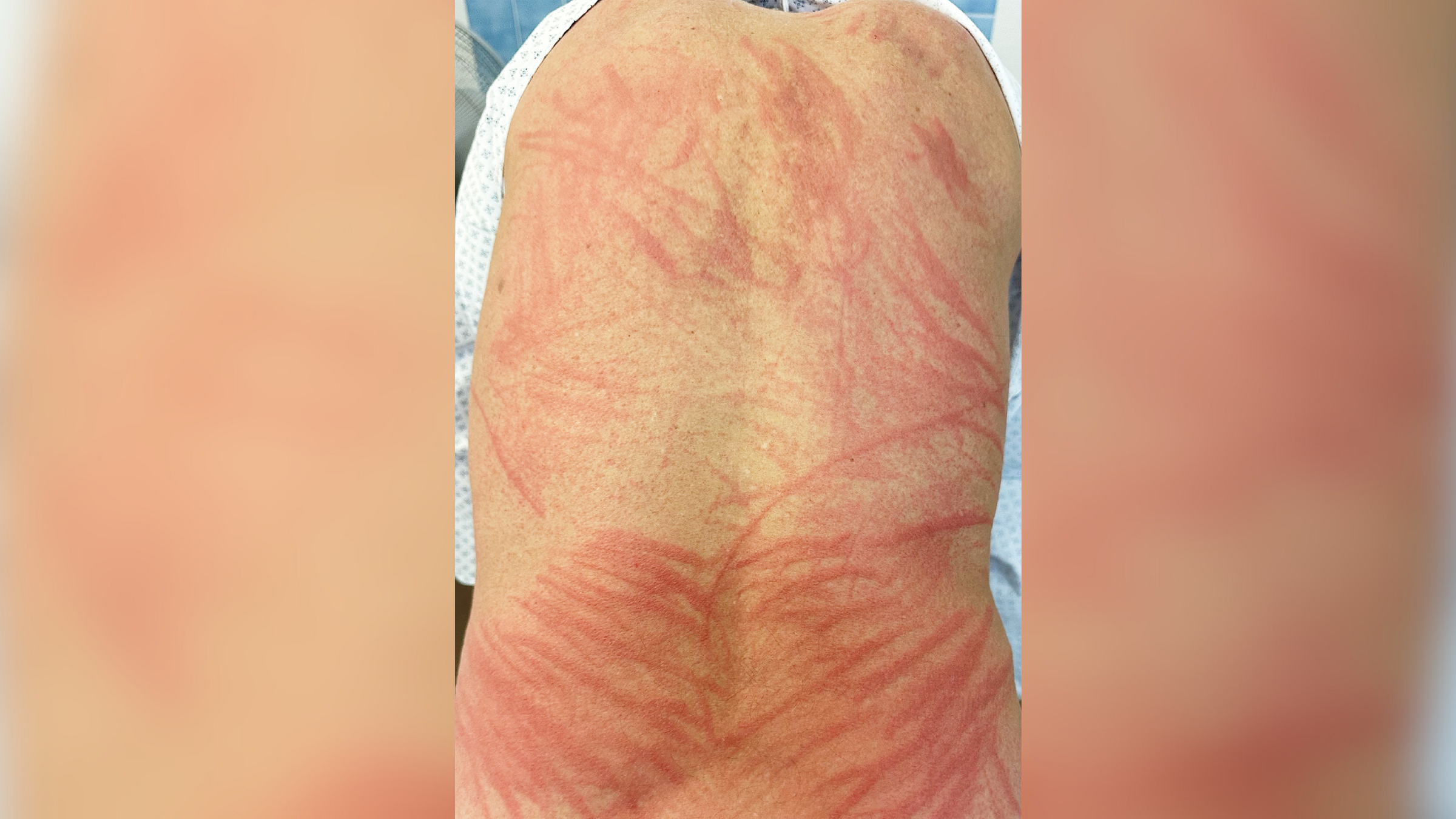Man gets rare 'shiitake dermatitis' from undercooked mushrooms
The man developed the painful rash two days after eating undercooked shiitake mushrooms.
A man ended up in the emergency department with a painful rash that crosshatched his entire back after he ate a very common edible mushroom.
The 72-year-old man had prepared and eaten a meal containing shiitake mushrooms (Lentinula edodes). In the two days after this meal, the man developed a rash across his back that was so itchy he couldn't sleep properly, according to a description of the case published Oct. 12 in The New England Journal of Medicine. When he went to the hospital, doctors examined his back and discovered that he had streaks of inflamed, swollen skin that looked as if he had been whipped across his back and the top of his butt.
The team initially ruled out dermographism, a condition that causes raised marks to form on the skin after it is scratched or rubbed. There were also no signs that his lymph nodes were swollen, which can indicate a viral or bacterial infection, or that the condition had begun to affect other tissues of the body.
Instead, considering what he'd eaten, the doctors diagnosed him with shiitake dermatitis, a reaction commonly associated with "whip-like" streaks on the trunk of the body.
Related: Man's 'shifting' rash caused by worms crawling under his skin
First reported in Japan in 1977, shiitake dermatitis is most common in Asia, where the mushrooms are regularly eaten. However, cases have been reported elsewhere, for example, in Europe, North America and South America.
The streaky rashes look similar to those that patients who take the chemotherapy drug bleomycin sometimes develop. They also look similar to rashes tied to dermatomyositis, an inflammatory condition that causes muscle weakness in addition to skin rashes, and adult-onset Still's disease, a type of inflammatory arthritis.
Get the world’s most fascinating discoveries delivered straight to your inbox.
In shiitake dermatitis, the linear rashes appear due to a carbohydrate in the mushrooms called lentinan. This carb triggers the release of chemical messengers, such as interleukin-1, that cause inflammation. This causes a patient's blood vessels to dilate, or widen, and the characteristic rash to develop, usually two to three days after a person has eaten the mushrooms.
Lentinan is broken down when heated, which is why this reaction occurs only when people eat raw or undercooked shiitake mushrooms.
"Shiitake dermatitis is averted when the mushrooms are thoroughly cooked at temperatures exceeding 145 degrees Celsius [293 degrees Fahrenheit], Eglė Janušonytė, a co-author of the case report and dermatology resident at Geneva University Hospitals in Switzerland, told Live Science in an email.
Normally, shiitake dermatitis goes away on its own without treatment, but patients can be given anti-inflammatory drugs to treat their symptoms. In this case, the man was prescribed steroids to apply on his back, as well as antihistamine tablets to take orally. After two weeks, his back was less itchy, but he did have darker patches left on his skin — this often happens after inflammation dies down in the skin.
The man was "advised to fully cook shiitake mushrooms in the future," the case report authors wrote. The doctors hope his case will raise health care providers' awareness of the condition.
"It is important for public and healthcare professionals to be aware of this clinically-distinctive condition, which might seem alarming initially but is, in reality, a self-limiting condition, with excellent prognosis," Janušonytė told Live Science. "Self-limiting" refers to diseases that typically go away without treatment.
Editor's note: This article was updated on Oct. 17, 2023 with original quotes from Eglė Janušonytė. The story was first published on Oct. 16.

Emily is a health news writer based in London, United Kingdom. She holds a bachelor's degree in biology from Durham University and a master's degree in clinical and therapeutic neuroscience from Oxford University. She has worked in science communication, medical writing and as a local news reporter while undertaking NCTJ journalism training with News Associates. In 2018, she was named one of MHP Communications' 30 journalists to watch under 30.



